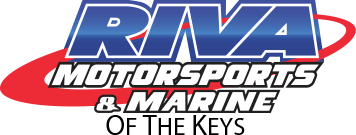Motorcycle Pre-Ride Checklist
 Each and every motorcycle ride should begin with a pre-ride inspection. It doesn’t take long at all and ensures that you’ll have a smooth, safe experience on the road. Take a few minutes to look your bike over and make sure that everything is in working order. There’s always a chance that you could discover an issue during your inspection. Perhaps your brakes aren’t functioning properly or your essential fluids are low. Whatever issue you run into, it’s vital to take care of it before you hit the road. It’s never a good idea to ride your motorcycle if you’ve noticed a problem, regardless of how small you think it is.
Each and every motorcycle ride should begin with a pre-ride inspection. It doesn’t take long at all and ensures that you’ll have a smooth, safe experience on the road. Take a few minutes to look your bike over and make sure that everything is in working order. There’s always a chance that you could discover an issue during your inspection. Perhaps your brakes aren’t functioning properly or your essential fluids are low. Whatever issue you run into, it’s vital to take care of it before you hit the road. It’s never a good idea to ride your motorcycle if you’ve noticed a problem, regardless of how small you think it is.
It can be difficult to remember every single step of a pre-ride inspection, so Riva Motorsports and Marine of the Keys is here to make it a little easier for you. We’ve put together a list of item for your pre-ride checklist so you won’t forget anything. Visit our dealership in Key Largo, FL near Miami today!
Wheels
For the most part, the wheel inspection you’ll do on your motorcycle will be preventative. This step is important because you can catch problems before they become a huge issue while you’re riding, such as a blowout or losing traction. Proper inflation plays a huge role in preventative care for your tires because it helps better distribute forces placed on your tread, acceleration, and braking due to your vehicle’s weight. The best way to handle this is with a tire pressure gauge. Refer to your owner’s manual so you know what standard to aim for. The ideal time for checking tire pressure is in the morning because the tires will be cold and it’ll be the most accurate reading.
Fluids
Fluids are essential to get your bike running. There needs to be the right amount of fluid, it needs to be the right color, and the consistency needs to be correct for your motorcycle to run well. You can check your engine oil using a dipstick. You slide it in, wipe it clean, slide it in once more, then check it. The oil should fall at the right spot on the dipstick to indicate there’s enough liquid. It should appear golden in color, not dark brown or black. When it comes to brake fluids, always check that you have enough. Some bikes have both front and back reserves for brake fluid so always check both if your model does.
Another good practice you should get in the habit of doing is topping off your fuel before each ride. You’ll always want to add more fuel than you think you’ll need because you never know what can happen on the road. Maybe you’ll encounter a hitch that drains more gas than you planned. You may need to alter your route if you hit unexpected obstacles along the way.
Brakes, Clutch, and Throttle
You’ll need to be riding your bike to check on the brakes, clutch, and throttle. Don’t hit the highway just yet, though. There could still be a potential issue that needs attention. Ride around your neighborhood in low-traffic areas to test these. When you test your brakes, be on high alert for any squealing, grinding, or vibrations. These unusual sounds and sensations could indicate a deeper problem that needs to be addressed, For the throttle, make sure it fully closes and that your bike does not idle when it shouldn’t. When testing the clutch, be aware of any grinding or rough feel to it.
Lights
Your bike’s lights function just as any other light bulbs do and this means that sooner or later, they’ll burn out and need to be replaced. Turn on your brake lights, headlights, and turn signals to confirm they’re all functioning and bright enough. Check the lenses and wipe away any dirt or mud that has been caked on.
If you uncover any worrisome issues when you conduct your pre-ride checklist, bring your bike into Riva Motorsports and Marine of the Keys for service! We’re located in Key Largo, FL near Miami today!

